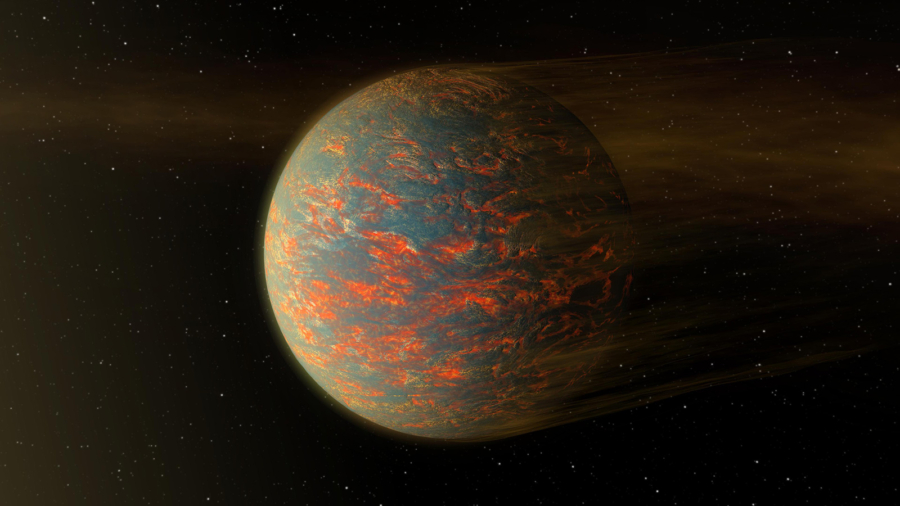The hunt for planets that could harbor life may have just narrowed dramatically.
Scientists had long hoped and theorized that the most common type of star in our universe—called an M dwarf—could host nearby planets with atmospheres, potentially rich with carbon and perfect for the creation of life. But in a new study of a world orbiting an M dwarf 66 light-years from Earth, researchers found no indication such a planet could hold onto an atmosphere at all.
Without a carbon-rich atmosphere, it’s unlikely a planet would be hospitable to living things. Carbon molecules are, after all, considered the building blocks of life. And the findings don’t bode well for other types of planets orbiting M dwarfs, said study coauthor Michelle Hill, a planetary scientist and a doctoral candidate at the University of California, Riverside.
“The pressure from the star’s radiation is immense, enough to blow a planet’s atmosphere away,” Hill said in a post on the university’s website.
M dwarf stars are known to be volatile, sputtering out solar flares and raining radiation on nearby celestial bodies.
But for years, the hope had been that fairly large planets orbiting near M dwarfs could be in a Goldilocks environment, close enough to their small star to keep warm and large enough to cling onto its atmosphere.
The nearby M dwarf, however, could be too intense to keep the atmosphere intact, according to the new study, which was published in The Astrophysical Journal Letters.
A similar phenomenon happens in our solar system: Earth’s atmosphere also deteriorates because of outbursts from its nearby star, the sun. The difference is that Earth has enough volcanic activity and other gas-emitting activity to replace the atmospheric loss and make it barely detectable, according to the research.
However, the M dwarf planet examined in the study, GJ 1252b, “could have 700 times more carbon than Earth has, and it still wouldn’t have an atmosphere. It would build up initially, but then taper off and erode away,” said study coauthor and UC Riverside astrophysicist Stephen Kane, in a news release.
Where Is Started and How It’s Going
GJ 1252b orbits less than a million miles from its home star, called GJ_1252. The planet reaches sweltering daytime temperatures of up to 2,242 degrees Fahrenheit (1,228 degrees Celsius), the study found.
The existence of the planet was first suggested by NASA’s Transiting Exoplanet Survey Satellite, or TESS, mission. Then, astronomers ordered the nearly 17-year-old Spitzer Space Telescope to set its sights on the area in January 2020—less than 10 days before Spitzer was deactivated forever.
The investigation into whether GJ 1252b had an atmosphere was led by astronomer Ian Crossfield at the University of Kansas and involved a collection of researchers from UC Riverside, NASA’s Jet Propulsion Laboratory, Caltech, the University of Maryland, Carnegie Institution for Science, the Max Planck Institute for Astronomy, McGill University, the University of New Mexico, and the University of Montreal.
They pored over the data produced by Spitzer, searching for emission signatures, or signs that a gaseous bubble could encase the planet. The telescope captured the planet as it passed behind its home star, allowing researchers to “look at the starlight as it’s passing through the atmosphere of the planet,” giving a “spectral signature of the atmosphere”—or lack thereof, Hill said.
Hill added that she wasn’t shocked to find no signs of an atmosphere, but she was disappointed. She’s looking for moons and planets in “habitable zones,” and the results made looking at worlds circling the ubiquitous M dwarf stars slightly less interesting.
Researchers hope to get even more clarity about these types of planets with the help of the James Webb Space Telescope, the most powerful space telescope to date.
Webb will soon set its sights on the TRAPPIST-1 system, “which is also an M dwarf star with a bunch of rocky planets around it,” Hill noted.
“There’s a lot of hope that it will be able to tell us whether those planets have an atmosphere around them or not,” she added. “I guess the M dwarf enthusiasts are probably holding their breath right now to see whether we can tell whether there’s an atmosphere around those planets.”
There are, however, still plenty of interesting places to hunt for habitable worlds. Apart from looking to planets farther away from M dwarfs that could be more likely to retain an atmosphere, there are still roughly 1,000 sunlike stars relatively near Earth that could have their own planets circling within habitable zones, according to the UC Riverside post about the study.

